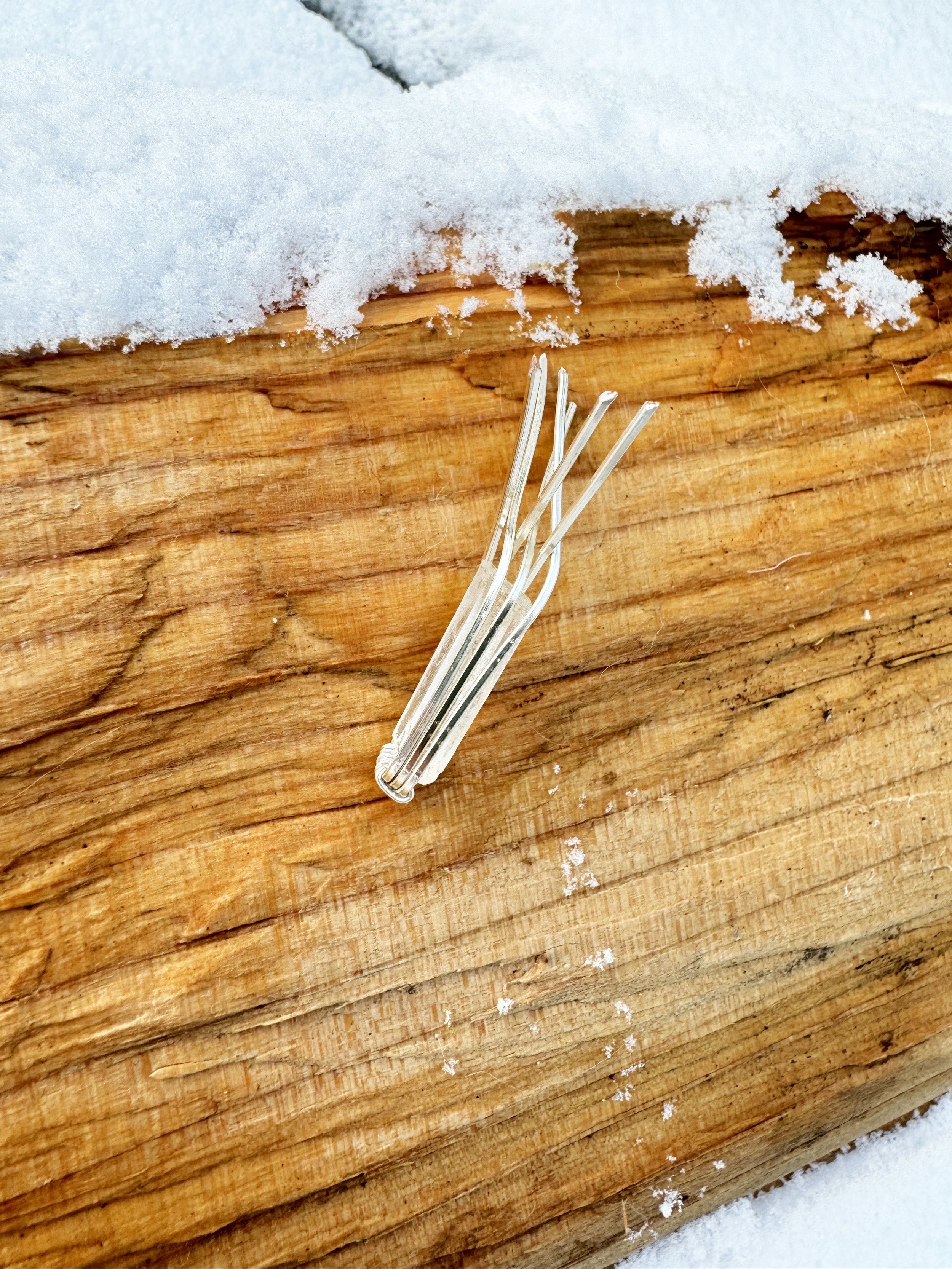There is a place I know where you can dig for your own quartz crystals in the mountains. I have found some amazing specimens over the years and I have always wanted to turn them into jewelry. This Christmas, I was making homemade gifts for all of my friends and family and I wanted to finally make the quartz necklaces I had been dreaming of! These necklaces mean so much to me because I found the crystal and made the necklace.
So below is the process of how to wire-wrap a quartz crystal.
Materials:
2mm or 3mm gemstone beads (I bought mine here: Etsy link)
.018 in (0.46mm) Bead Stringing Wire
18-Gauge Flat Silver Wire
German Style Wire, Round, 24 Gauge (AKA thin wire)
Small Crimp Beads
Small Jump-Rings
Lobster Claw Clasps
Round Nose Pliers
Wire Cutters
Chain Nose Pliers
Step 1: Cut 3 pieces of 18-Gauge Flat Silver Wire to the same size, make sure it is longer that three times your crystal. Bind all three wires with German Style Wire, Round, 24 Gauge. Make sure the binding is as wide as your crystal.
Step 2: Bend your wires to a ‘U’ shape using your hands.
Step 3: Place your crystal inside the ‘U’ and alternately bend the wires over the top of the crystal. Make sure the wire is is interlaced at the top like the picture in the right.
Step 4: Fasten the wire together at the top using the German Style Wire, Round, 24 Gauge (AKA thin wire.) Its okay if its not perfect!
Step 5: Make a bend in the center of each exterior wire on both sides of the crystal.
Step 6: Using pliers, crimp together the wires that you pulled out, you may have to pull them out a lot if the crystal is not flat. Then, trim the tops of the wire to all be the same height and using the Round Nose Pliers, curl the top wires.
That is how you wrap a quartz crystal! Make sure the top wires have no gaps and are even.
Step 7: Cut a piece of .018 in (0.46mm) Bead Stringing Wire for one side of the necklace and loop it through one side of the crystal pendant. Secure the string using two crimp beads. Repeat on the other side and then string on the 2mm or 3mm gemstone beads.
Step 8: Fasten the necklace by looping the tails of the string through two crimp beads and a Lobster Claw Clasp, cut off the remains of the string. Repeat on the other side of the necklace but with a jump ring.
You can experiment with all different sorts of beads and you can use this technique on any kind of crystal!
Have fun making jewelry!
Olivia















